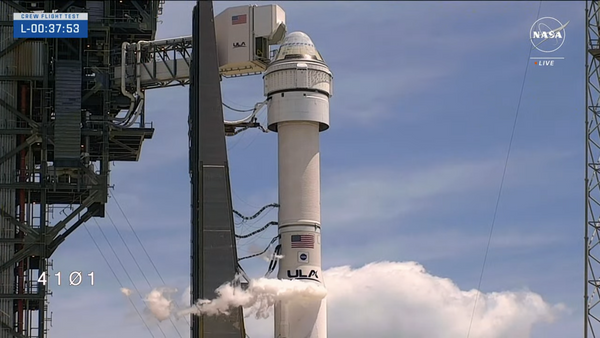As a new wave of Omicron cases strikes several major cities across China, Lucy, a community worker, again switches to "fighting mode" as she braces for a long stint of 15-hour days.
Lucy's hometown of Nanjing, in eastern China, is not a COVID hotspot but is facing immense pressure because of its proximity to Shanghai, which is going through a phased lockdown to curb a surge of new cases.
By the middle of last week, the financial hub was reporting almost 6,000 daily cases — a city record.
Lucy, who only wants to be known by her first name, has been assigned to manage 490 households with more than 900 residents.
Her duties include communicating with people under home quarantine, enforcing lockdown rules, organising mass testing, and collecting and logging contact tracing data.
Aside from the use of mass data, China's COVID strategy is largely reliant on the mobilisation of a powerful grassroots force: neighbourhood committees.
According to China's Ministry of Civil Affairs, each committee has an average of six community workers who are responsible for managing a neighbourhood consisting of a cluster of residential buildings.
Enormous pressure on China's frontline community workers
Lucy is among 4 million community workers in China who are enforcing COVID-zero rules on a day-to-day basis.
"It is hard to eat or rest on time … we are falling sick one after another," she said.
Lucy said the pool of community workers had been "stretched for over two years" and is now "reaching its limit" due to the "endless and harsh" workload.
"We [community workers] are the largest and most extensive 'net' for epidemic prevention and control in China," Lucy said.
"But everyone in this net is in a state of burnout and experiencing huge mental pressure.
"We are really battling with our lives to guard that line of defence, eliminate the virus and make a macro-level contribution to society."
The ABC has contacted China's Ministry of Civil Affairs for comment on working conditions.
Professor George Liu, a public health expert at La Trobe University, said China's COVID-zero model was "still working" and likely to remain sustainable despite the pressure placed on community workers.
"If you look at China's policy, it's quick action, jump on top of the virus within a short period of time … if China can still do that, I think the community will be able to cope."
However, Professor Liu said China had also started several initiatives, such as handing out rapid antigen tests and building makeshift hospitals, which may indicate a "preparation for future relaxation of the COVID-zero policies".
"But right now, people are concerned about the high infection and transmission rate … the big concern is whether the health system in China can cope with the escalation of infections," he said.
'I just tell myself this will eventually end'
Yan, another community worker, spends a big chunk of her day making hundreds of calls to people whose details show up on her computer screen.
She's trying to track and manage those who are "at risk" of carrying coronavirus.
Similar to Lucy, Yan's residential committee has only nine community workers who are in charge of a neighbourhood of about 8,500 residents.
"In a minority of cases, the big data information is not accurate or not complete, so we need to call every single person to verify," she said.
"We are required to verify and clear all the data that shows up each day … making so many calls that some have lost their voices."
When orders for mass testing come, Yan and her team rush out of the office to set up tents and inform residents.
As a part of the COVID-zero strategy, China conducts mass testing of millions of citizens in short intervals to find undetected or asymptomatic cases.
In just the last month, Yan and her team have organised five rounds of mass testing covering nearly 40,000 people.
When assigned the "urgent task" of mass testing by the municipal government, Yan said her team worked for up to 40 hours in a row to set up the facilities and gather the required personnel.
"Residents are mostly cooperative and they understand how hard the work is for community and medical workers … but China just has so many people," she said.
"I have lower back problems but I cannot just stop and rest … as a [Communist] Party member, I should respond actively and stay put on the frontline."
To cope with the long hours of standing, she takes painkillers and ties belts around her waist.
Checking temperatures and taking out rubbish all in a day's work
Community workers are also in charge of residents under home quarantine.
They carry out tasks such as attaching door sensors (which detect whether residents have opened the door), checking temperatures, delivering supplies, and taking out rubbish.
"But the biggest difficulty is to satisfy all the demands of the residents given we have such staff shortages," Lucy said.
"Sometimes residents order a lot of things online for us to deliver … in the most extreme case one of the workers ran up stairs to deliver things to a household four times in one day."
Lucy said community workers connect with the residents through WeChat to both enforce quarantine rules and provide psychological support.
"We video chat with each resident [under quarantine] every day, ask about their mental and physical health, and whether they need help, and we try our best to resolve their problems."
However, such personalised care is not always possible in large-scale outbreaks when workers become overwhelmed, such as in the case of Shanghai.
As the city imposes strict lockdowns, there have been reports of residents in need of urgent medical treatment denied hospital care because of COVID protocols.
"Regardless of how detailed the policy is, you need enough people to actually execute it."
Community workers call for more support
Professor Liu said many community workers were facing burnout.
"China's Center for Disease Control depends on grassroots health workers and community workers to implement many of the activities," Professor Liu said.
"Because of the long duration of the campaign, many people feel exhausted, which is what you call a burnout."
China's State Council has said policies should be made to improve community workers' salaries and a volunteer system should be established to support workers during emergencies.
Lucy said workers like her needed "more protection" and "more time off".
"There is a solution, and the solution is clear," she said.
"The government needs to invest more to expand neighbourhood committees, give the community workers enough time off, arrange their times reasonably and provide enough subsidy."







